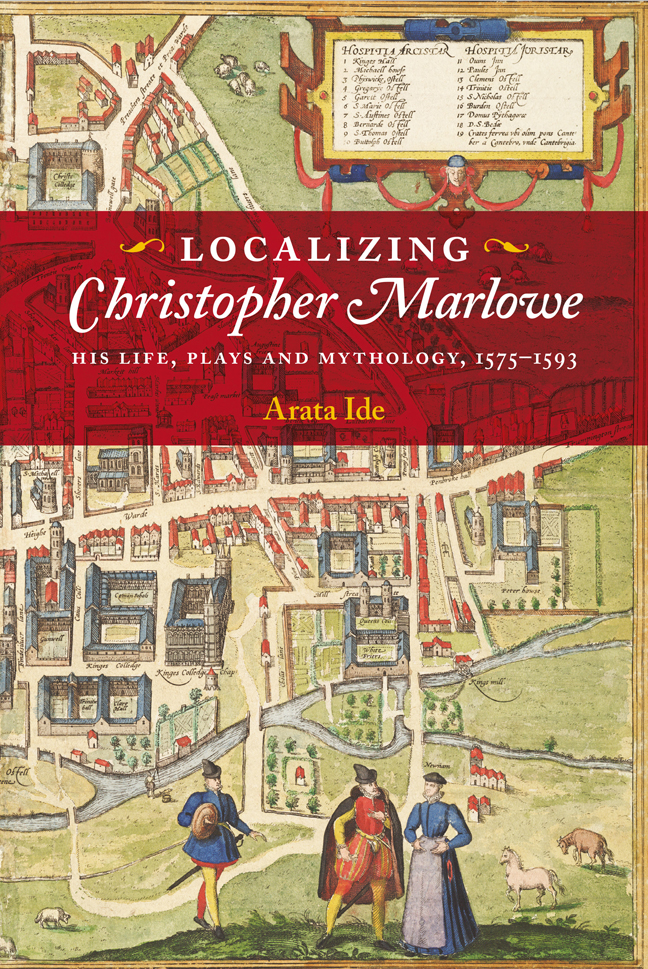Book contents
- Frontmatter
- Dedication
- Contents
- List of Illustrations
- Acknowledgements
- List of Abbreviations
- Timeline
- Note for the Reader
- Introduction
- Part I Life
- Part II Plays
- Part III Myths
- Conclusion
- Appendix 1 Transcript of the plan in Norfolk Record Office, NRS 23372, Z99
- Appendix 2 Transcript of the plan in Corpus Christi College Archives, CCCC08/28
- Appendix 3 Transcript and translation of the John Marley vs Nevell Hayes case
- Appendix 4 List of Foundation Scholars of Corpus Christi College, 1573–87
- Bibliography
- Index
- Miscellaneous Endmatter
1 - Matthew Parker and the Norwich–Corpus Connection
Published online by Cambridge University Press: 22 February 2024
- Frontmatter
- Dedication
- Contents
- List of Illustrations
- Acknowledgements
- List of Abbreviations
- Timeline
- Note for the Reader
- Introduction
- Part I Life
- Part II Plays
- Part III Myths
- Conclusion
- Appendix 1 Transcript of the plan in Norfolk Record Office, NRS 23372, Z99
- Appendix 2 Transcript of the plan in Corpus Christi College Archives, CCCC08/28
- Appendix 3 Transcript and translation of the John Marley vs Nevell Hayes case
- Appendix 4 List of Foundation Scholars of Corpus Christi College, 1573–87
- Bibliography
- Index
- Miscellaneous Endmatter
Summary
The chamber plans of Corpus Christi that we are going to examine in this chapter are a visual and spatial representation of the college's social space and show how it served as a hub of communications, propelling members to affiliate with others, both inside and outside their communities, and to expand their factional networks into the intellectual layers of society. What we find in these plans is a kind of microcosm of the social nuclei that spread dendrites of personal and political interconnections to cells in other colleges, cities, provinces, and the royal court. This micro-level understanding of local politics and affiliations provides insight into how university scholars came to have a rapport with local magnates and to be engaged in working for them, and what political agendas they had to support in return for patronage.
THE FORMATION OF CLUSTERS IN THE COLLEGE COMMUNITY
It was a common feature of universities in the later sixteenth century that the influx of so many students caused a ‘serious crisis of accommodation’. Corpus Christi College was no exception. Although the total membership was reported to amount to only thirty-two in 1564, numbers had shot up to more than ninety in less than a decade. The refurbishment of a disused building into the pensionary in 1569 was obviously one of the measures employed to deal with the problem, which was of great urgency. Moreover, the college delegates complained in 1579 that the college had no convenient place for divine service, ‘by reason that the nomber of Fellowes, Schollers and Students in the same Colledge be so muche encreased and daily do encrease’. Judging from Bacon's plan of 1577, the college seems to have been unable to afford sufficient living space to keep up with the marked increase. By then, the three-storey building was closely packed with 107 college members: the master, eleven fellows, and eighty-four students in the court, together with one fellow and ten students in the pensionary.
The high density of residents seems to have been further exacerbated by the unavailability of one particular chamber on the east side of the court. This chamber, under the Old Library (Chamber 11 in Parker's plan of 1575), had disappeared by the time of Bacon's plan of 1577. The general overview of the college (figure 9) gives an important clue as to the reason for its disappearance.
- Type
- Chapter
- Information
- Localizing Christopher MarloweHis Life, Plays and Mythology, 1575-1593, pp. 33 - 63Publisher: Boydell & BrewerPrint publication year: 2023

